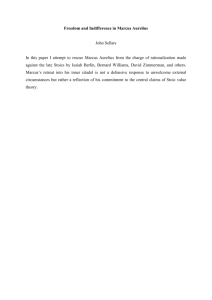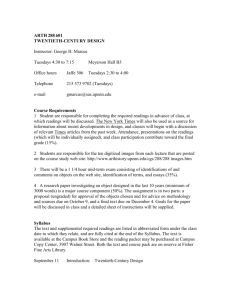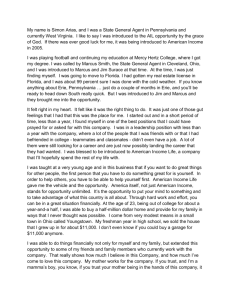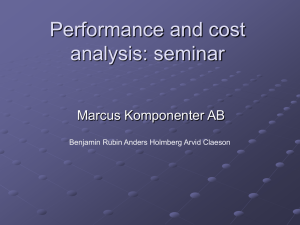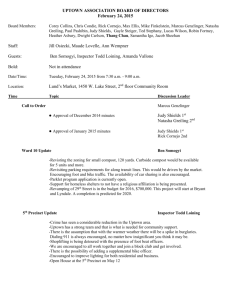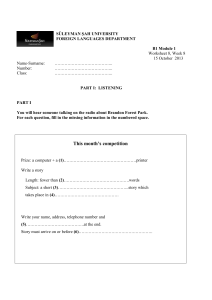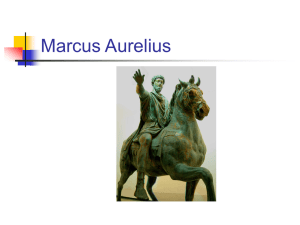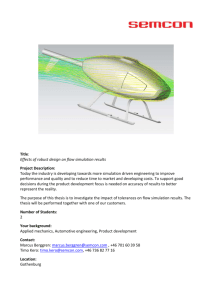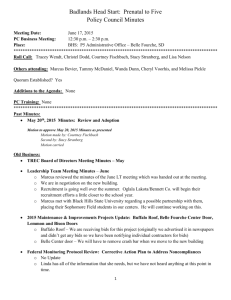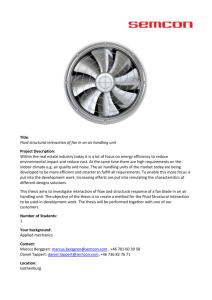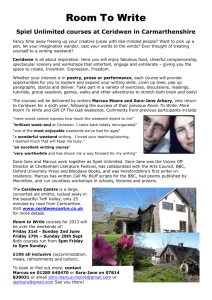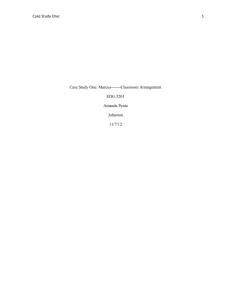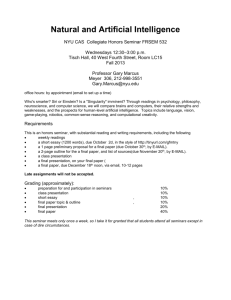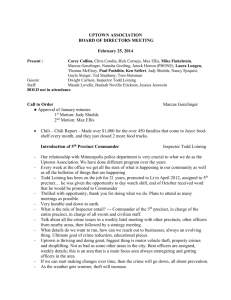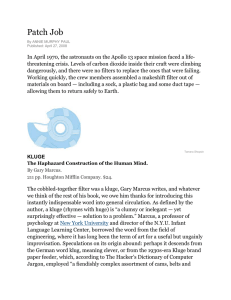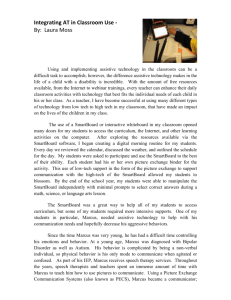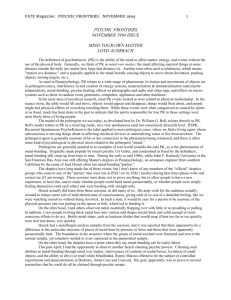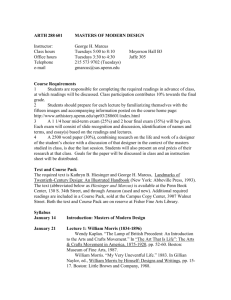Twentieth-Century Design - Department of Art History
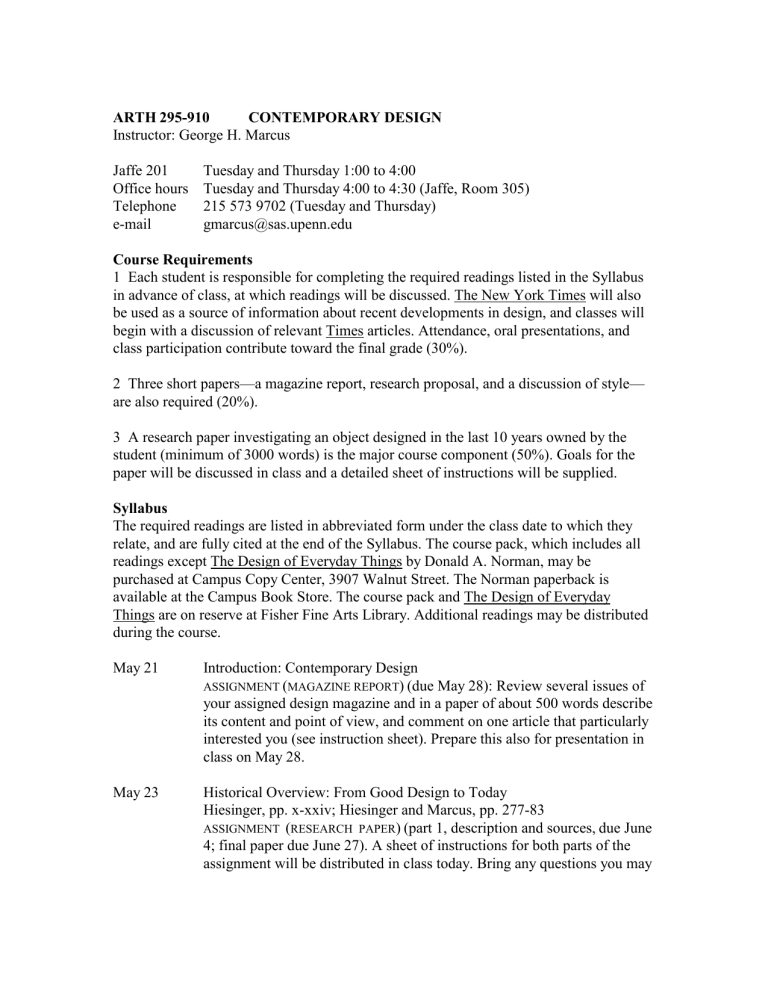
ARTH 295-910 CONTEMPORARY DESIGN
Instructor: George H. Marcus
Jaffe 201 Tuesday and Thursday 1:00 to 4:00
Office hours Tuesday and Thursday 4:00 to 4:30 (Jaffe, Room 305)
Telephone e-mail
215 573 9702 (Tuesday and Thursday) gmarcus@sas.upenn.edu
Course Requirements
1 Each student is responsible for completing the required readings listed in the Syllabus in advance of class, at which readings will be discussed. The New York Times will also be used as a source of information about recent developments in design, and classes will begin with a discussion of relevant Times articles. Attendance, oral presentations, and class participation contribute toward the final grade (30%).
2 Three short papers—a magazine report, research proposal, and a discussion of style— are also required (20%).
3 A research paper investigating an object designed in the last 10 years owned by the student (minimum of 3000 words) is the major course component (50%). Goals for the paper will be discussed in class and a detailed sheet of instructions will be supplied.
Syllabus
The required readings are listed in abbreviated form under the class date to which they relate, and are fully cited at the end of the Syllabus. The course pack, which includes all readings except The Design of Everyday Things by Donald A. Norman, may be purchased at Campus Copy Center, 3907 Walnut Street. The Norman paperback is available at the Campus Book Store. The course pack and The Design of Everyday
Things are on reserve at Fisher Fine Arts Library. Additional readings may be distributed during the course.
May 21 Introduction: Contemporary Design
ASSIGNMENT ( MAGAZINE REPORT ) (due May 28): Review several issues of your assigned design magazine and in a paper of about 500 words describe its content and point of view, and comment on one article that particularly interested you (see instruction sheet). Prepare this also for presentation in class on May 28.
May 23 Historical Overview: From Good Design to Today
Hiesinger, pp. x-xxiv; Hiesinger and Marcus, pp. 277-83
ASSIGNMENT ( RESEARCH PAPER ) (part 1, description and sources, due June
4; final paper due June 27). A sheet of instructions for both parts of the assignment will be distributed in class today. Bring any questions you may
May 28
Baker, pp. 41-47
MAGAZINE REPORT DUE
Note: The first half of this class will meet in Fisher Fine Arts Library
May 30
June 4 have about the paper to the next class and be prepared to describe the object you plan to write about.
Design Sources and Writing about Design
Products in Our Lives
Bloch, pp. 16-29; Brooks, pp. 54-102
Understanding Process
June 6
Marcus, pp. 17-38; Klein, pp. 196-229
RESEARCH PAPER ( PART 1) DUE
Setting Style
ASSIGNMENT ( RESPONSE TO STYLE ) (due June 13): In a paper of about 500 words, discuss your understanding of, or experience with, style, or present your personal reactions to the contemporary styles discussed in the readings and in class.
Marcus, pp. 41-62; Read, pp. 3-9; Rashid, pp. 245-47; Nobel
June 11
June 13
June 18
Using Technology
Marcus, pp. 65-84; Postman, pp. 3-20; Tenner, pp. 296-323; Antonelli, pp.
9-19
Being Responsible (I)
Marcus, pp. 87-106; Norman; Dreyfuss, pp. 4-6, G1, G2
STYLE PAPER DUE
June 20
June 25
June 27
Being Responsible (II)
Papanek, pp. 29-48; McDonough and Braungart, pp. 92-117; Balaram, pp. 131-40
Serving Individuals
Marcus, pp. 109-20; Null and Cherry, pp. 1-21; Vanderheiden
Conveying Messages
Marcus, pp. 123-35; Williams, pp. 7, 8, 10.
Presentation and Discussion of Research Papers
RESEARCH PAPER DUE
R EQUIRED R EADINGS
Kathryn B. Hiesinger. “Introduction: Design Since 1945.” In Kathryn B. Hiesinger and
George H. Marcus, Design Since 1945, pp. x-xxiv. Philadelphia: Philadelphia Museum of
Art, 1983.
Kathryn B. Hiesinger and George H. Marcus. “Postmodernism and Pluralism Since
1980.” In Landmarks of Twentieth-Century Design: An Illustrated Handbook, pp. 277-83. New York: Abbeville Press, 1993.
Nicholson Baker. The Mezzanine, chapter 6, pp. 41-47. New York: Vintage, 1990.
Peter H. Bloch. “Seeking the Ideal Form: Product Design and Consumer Response.”
Journal of Marketing, 59 (July 1995), pp. 16-29.
David Brooks. “Consumption.” In Bobos in Paradise: The New Upper Class and How
They Got There, chapter 2, pp. 54-102. New York: Simon & Schuster, 2000.
George H. Marcus. What Is Design Today? New York: Harry N. Abrams, forthcoming.
Naomi Klein. “The Discarded Factory.” In No Logo: Taking Aim at the Brand Bullies, pp. 195-229. New York: Picador, 1999.
Herbert Read. Introduction. In Ursula Hatje, The Styles of European Art, pp. 3-9. New
York: H. N. Abrams, 1965.
Karim Rashid. “Blobism.” In Karim Rashid: I Want to Change the World, pp. 245-47.
New York: Universe, 2001.
Philip Nobel. “Can Design in America Avoid the Style Trap?” The New York Times,
November 26, 2000.
Neil Postman. “The Judgment of Thamus.” In Technopoly: The Surrender of Culture to
Technology, pp. 3-20. New York: Alfred A. Knopf, 1992.
Edward Tenner. “Sport: The Paradoxes of Improvement.” In Why Things Bite Back:
Technology and the Revenge of Unintended Consequences, pp. 296-323. New York:
Vintage Books, 1997.
Paola Antonelli. Mutant Materials in Contemporary Design. New York: The Museum of
Modern Art, 1995, pp. 9-19.
Donald A. Norman. The Design of Everyday Things. New York: Doubleday, 1990.
Henry Dreyfuss. General Information and charts. In The Measure of Man: Human Factors in Design, pp. 4-6, G1, G2. 2d ed., rev. and enl. New York: Whitney Library of Design,
1967.
Victor Papanek. “Designing for a Safer Future.” In The Green Imperative: Natural Design for the Real World, pp. 29-48. New York: Thames and Hudson, 1995.
William McDonough and Michael Braungart. “Waste Equals Food.” In Cradle to Cradle:
Remaking the Way We Make Things, pp. 92-117. New York: North Point Press, 2002.
Singanapalli Balaram. “Invisible Design: The Alternative Approaches.” In Thinking
Design, pp. 131-40. Ahmedabad, India: National Institute of Design, 1998.
Roberta L. Null with Kenneth F. Cherry. “What Is the Americans with Disabilities Act?”
In Universal Design: Creative Solutions for ADA Compliance, pp. 1-21. Belmont,
California: Professional Publications, 1996.
Gregg C. Vanderheiden. “Thirty-Something (Million): Should They Be Exceptions?”
<http://trace.wisc.edu/docs/30_some/30_some.htm>. From The Human Factors, Inc.
Journal, 32 (1990), pp. 383-96.
Gareth Williams. “Are You Branded?” In Branded?, pp. 7, 8, 10. London: V & A
Publications, 2000.
